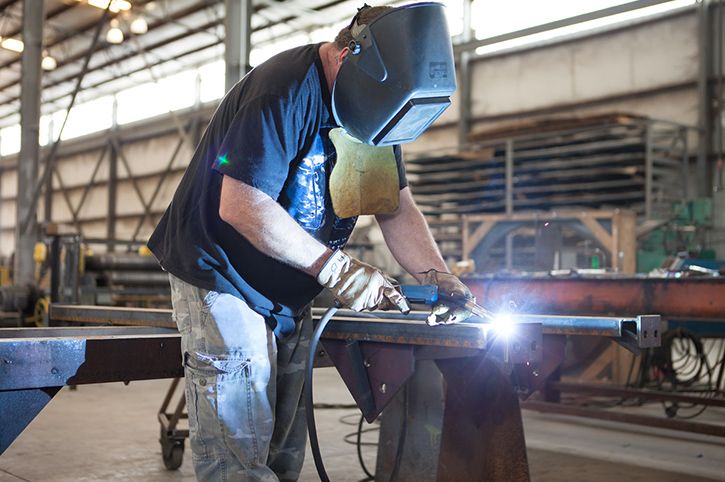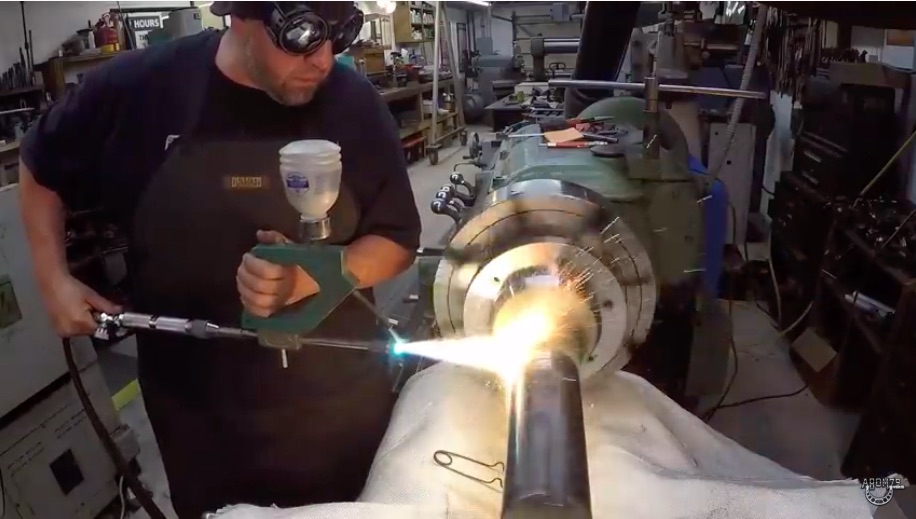Typical Welding Repair Work Issues and How to Address Them Successfully
Welding repair services typically encounter a variety of issues that can endanger the honesty of the end product. Common problems consist of inadequate infiltration, porosity, and misalignment, among others. Each issue presents one-of-a-kind obstacles that need certain methods for resolution. Comprehending these issues is vital for welders intending to improve their abilities and results. This discussion will explore these usual welding repair problems and reliable techniques to resolve them.
Poor Penetration
Inadequate infiltration happens when the weld metal falls short to totally fuse with the base material, causing weak joints and prospective structural failures. This issue typically originates from inadequate warmth input, inaccurate electrode angle, or inappropriate welding rate. Welders may run into inadequate penetration as a result of a miscalculation of the needed parameters for a details product density or kind. Furthermore, contamination on the base material's surface area can impede efficient bonding, exacerbating the issue. To resolve inadequate infiltration, welders ought to ensure ideal settings on their equipment and maintain a clean job surface. Regular examination of welds is recommended to determine any kind of deficiencies early, permitting timely modifications and the avoidance of compromised architectural honesty in bonded assemblies.
Porosity
Porosity is a common issue in welded joints that manifests as tiny gas bubbles trapped within the weld steel. This flaw can jeopardize the stability of the weld, bring about decreased strength and possible failing under anxiety. Belgrade Welding. Porosity usually develops from contamination, moisture, or improper welding methods, which enable gases to leave into the molten weld swimming pool. To resolve porosity, welders should guarantee proper surface area prep work, preserve a tidy working environment, and use appropriate welding parameters. Furthermore, selecting the right filler material and protecting gas can alleviate gas entrapment. Normal examination and screening of welds can assist identify porosity early, ensuring prompt restorative activities are taken, thereby maintaining the top quality and reliability of the bonded structure
Misalignment
Imbalance in welding can occur from various elements, consisting of improper configuration and thermal expansion. Understanding the source is essential for efficient resolution. Several modification methods are readily available to realign elements and assure structural integrity.
Sources of Misalignment
Welding imbalance typically originates from a range of underlying concerns that can endanger structural honesty. One key cause is inappropriate fit-up of elements before welding, which can lead to spaces and irregular surfaces. Variants in thermal growth during the welding process can additionally lead to distortion, specifically if the materials being joined have various coefficients of expansion. Additionally, poor clamping and fixturing may stop working to hold components safely in area, leading to motion throughout welding. Badly kept equipment, consisting of welding devices and devices, may introduce inconsistencies in the weld grain, more adding to misalignment. Operator error, stemming from insufficient training or experience, can additionally play a substantial function in developing misaligned welds.

Modification Techniques Offered
Dealing with misalignment efficiently requires a combination of rehabilitative strategies tailored to the specific concerns handy. One common approach is the use of jigs or fixtures to hold components in the proper position throughout welding, making sure constant alignment. Furthermore, pre-heating the products can help in reducing distortion and improve fit-up. For considerable misalignment, mechanical adjustment techniques, such as utilizing hydraulic jacks or clamps, can be employed to remedy the position prior to welding. Post-weld heat treatment may also be required to soothe stress and anxieties brought on by imbalance. Cautious examination and modification during the arrangement phase can protect against imbalance problems from coming to be considerable issues, promoting a smoother welding procedure and improving overall structural stability.
Distortion
Distortion is an usual challenge in welding that can arise from various aspects, consisting of uneven cooling and heating. Understanding the sources of distortion is important for implementing reliable avoidance methods. Resolving this concern not just improves structural integrity however likewise enhances the total top quality of the weld.
Sources of Distortion
When subjected to the intense warm of welding, materials commonly undergo modifications that can result in distortion. This sensation primarily arises from thermal growth and contraction throughout the welding process. As the weld area warms up, the material increases; upon air conditioning, it contracts, which can create inner stresses. Additionally, irregular heating throughout a workpiece can worsen these stresses, causing bending or bending. The sort of product additionally plays a substantial function; steels with varying thermal conductivity and coefficients of growth may react in different ways, bring about uncertain distortions. Bad joint style and poor fixturing can contribute to imbalance throughout welding, enhancing the chance of distortion. Recognizing these causes is vital for effective welding repair and prevention strategies.
Prevention Techniques
Reliable prevention methods for distortion throughout welding emphasis on regulating heat input and making certain correct joint design. Keeping a constant warm input aids to lessen thermal development and tightening, which can lead to distortion. Utilizing strategies such as pre-heating the work surface can likewise minimize the temperature gradient, advertising consistent heating. Furthermore, selecting proper joint designs, such as T-joints or lap joints, can boost stability and minimize stress concentrations. Carrying out appropriate fixturing to protect the work surfaces in position better aids in keeping positioning throughout the welding procedure. Staggered welding series can disperse heat extra equally, avoiding localized distortion. By applying these techniques, welders can greatly decrease the likelihood of distortion and improve the total quality of their welds.
Fracturing
Cracking is a typical issue experienced in welding fixings, commonly arising from numerous aspects such as inappropriate cooling prices, product choice, or inadequate joint prep work. The event of splits can greatly endanger the honesty of the weld, leading to potential failings during procedure. To resolve this issue, welders need to initially analyze the origin, guaranteeing that materials work and suitably selected for the weld washers specific application. In addition, regulating the cooling price during the welding process is important; quick air conditioning can generate tension and bring about cracking. Appropriate joint design and preparation additionally add to reducing the threat. Applying these strategies can boost weld quality and sturdiness, inevitably lowering the chance of splitting in completed weldments.

Insufficient Blend
A substantial issue in welding repair services is incomplete combination, which takes place when the weld metal does not effectively bond with the base material or previous weld passes - Montana Mobile Welding and Repair Belgrade Fabrication. This issue can cause weak points in the joint, potentially jeopardizing the honesty of the welded structure. Factors adding to insufficient fusion consist of insufficient warmth input, inappropriate welding method, and contamination of the surface areas being signed up with. To address this concern effectively, welders ought to guarantee correct pre-weld cleaning and surface area prep work, along with change their welding parameters to achieve ample penetration and fusion. Routine evaluation during the welding procedure can additionally aid identify incomplete blend early, allowing for timely rehabilitative measures to enhance the total quality of the weld
Overheating
While welding repair services can improve structural honesty, overheating provides a substantial challenge that can result in product deterioration. Excessive heat during welding can alter the mechanical homes of steels, causing minimized toughness, enhanced brittleness, and bending. This phenomenon is particularly crucial in high-stress applications where structural integrity is extremely important. Identifying getting too hot can include aesthetic examinations for discoloration or distortion, in addition to checking temperature during the welding procedure. To reduce the risks connected with overheating, welders should employ appropriate strategies, such as regulating warmth input, readjusting travel rate, and utilizing ideal filler products. In addition, implementing pre- and post-weld warmth therapies can assist amico welder recover material residential properties and boost the total quality of the repair service, ensuring long-term efficiency and security.
Often Asked Inquiries
What Are the Common Signs of a Welding Defect?

How Can I Evaluate My Welds for Top quality?
To examine welds for quality, one can utilize visual assessments, ultrasonic screening, and radiographic approaches. Each method guarantees architectural honesty, recognizes issues, and confirms adherence to specified criteria, ultimately boosting the reliability of the bonded joints.
What Security Precautions Should I Take While Welding?
When welding, one ought to focus on safety by putting on suitable personal safety equipment, making certain appropriate ventilation, safeguarding combustible products away, keeping a tidy workspace, and understanding environments to prevent injuries and accidents.
Can I Repair a Weld Without Redesigning the Entire Joint?
Fixing a weld without renovating the whole joint is possible, relying on the damage (Welding). Strategies such as best budget welder grinding, including filler product, or using a welding procedure can successfully address specific problems while maintaining the surrounding structure
What Tools Are Necessary for Effective Welding Fixes?
Necessary devices for reliable welding fixings consist of a welding machine, cord brush, mill, safety gear, clamps, and filler materials. Each device plays an important function in guaranteeing quality and security throughout the fixing procedure. Porosity commonly develops from contamination, moisture, or incorrect welding strategies, which permit gases to leave right into the molten weld pool. Inadequately kept devices, including welding devices and devices, may present incongruities in the weld bead, additional adding to misalignment. When subjected to the extreme warm of welding, materials frequently undertake changes that can lead to distortion. Fracturing is an usual concern experienced in welding repair services, usually resulting from different variables such as inappropriate cooling prices, product selection, or poor joint preparation. A substantial concern in welding repairs is incomplete fusion, which takes place when the weld steel does not adequately bond with the base product or previous weld passes.